Ask Ethan: Can dark matter be nonparticulate?
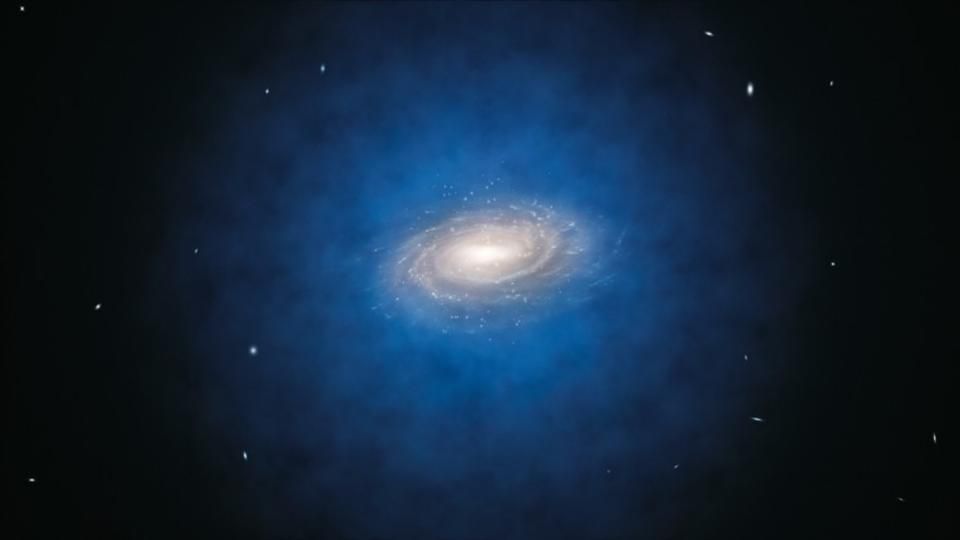
Although most of the dark matter in the galaxy exists in a huge halo enveloping us, every single particle of TM moves in an elliptical orbit under the influence of gravity. If TM particles are antiparticles themselves, and we figure out how to harness them - they can be an ideal source of energy.
Everything that we have ever found in the universe, from matter to radiation, can be broken down into the smallest components. Everything in this world consists of atoms, which are composed of nuclei and electrons, and nuclei consist of quarks and gluons. Light also consists of particles - photons. Even gravitational waves, theoretically, consist of gravitons: particles that we can receive and register one day. What about dark matter? Indirect evidence of its existence is indisputable and stunning, but must it necessarily consist of particles? This is what the reader is asking us:
If dark energy can be defined as the energy inherent in the fabric of space, can it be that what we perceive as “dark matter” is also an integral function of space — strongly or weakly associated with dark energy? That is, instead of TM consisting of particles, can it penetrate the whole space with gravitational effects (homogeneous or heterogeneous), which can be explained by our observations - something like a “dark mass”?
Let's look at the testimonies and see what they tell us about the opportunities that exist.
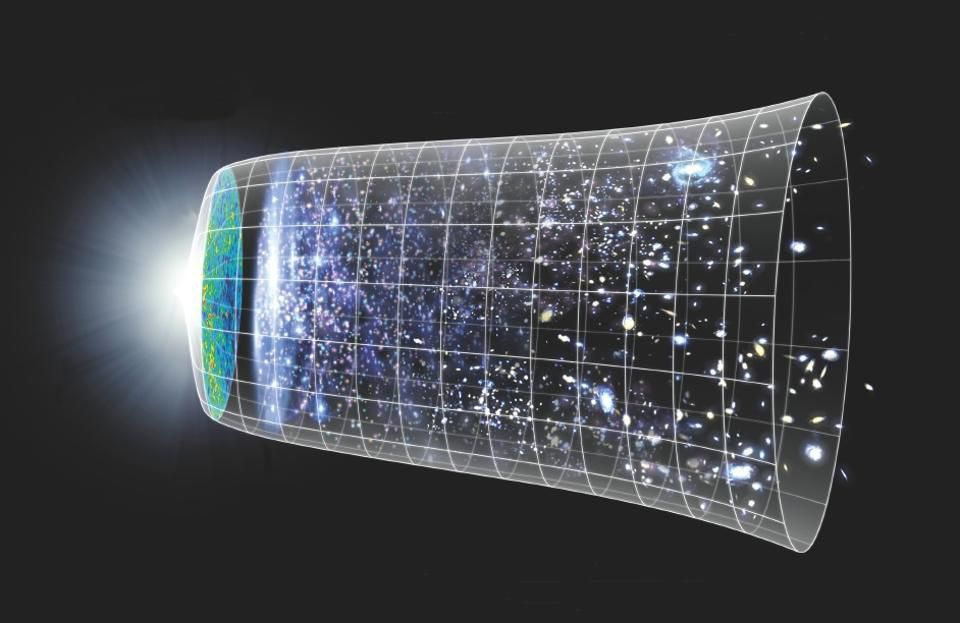
Expansion (or contraction) of space is a necessary consequence of the Universe containing mass. But the rate of expansion and its change in time quantitatively depends on the contents of the universe.
One of the most remarkable properties of the Universe is the direct connection between its content and the change in the rate of expansion over time. Through a variety of careful measurements of various individual sources of information - stars, galaxies, supernovae, relic radiation, large-scale structures of the universe - we were able to measure both of these quantities and determine the composition of the universe. In principle, we could imagine a whole set of everything that our Universe could consist of - but all these things would have a different effect on the space expansion.

Various components and contributions to the energy density of the Universe and the time of their possible dominance. If cosmic strings and walls of domains existed in some tangible quantity, they would make a significant contribution to the expansion of the Universe.
Due to the complete data set for today we know what the Universe consists of:
- 68% - dark energy, the density of which is conserved with the expansion of space;
- 27% - dark matter, having a gravitational effect, with a density decreasing with increasing volume, not interacting, as far as can be judged from measurements, by some other interactions;
- 4.9% - normal matter, experiencing all the physical interactions, with density, decreasing with increasing volume, clumping, and consisting of particles;
- 0.1% - neutrino, subject to gravitational and weak nuclear interactions, consist of particles, mix up only if they are slowed down enough to behave like matter, and not as radiation;
- 0.01% photons experiencing gravitational and electromagnetic interactions that behave like radiation; with increasing volume, their density decreases, and the wavelength stretches.
Over time, the importance of these various components has changed, and the percentages represent the current Universe.
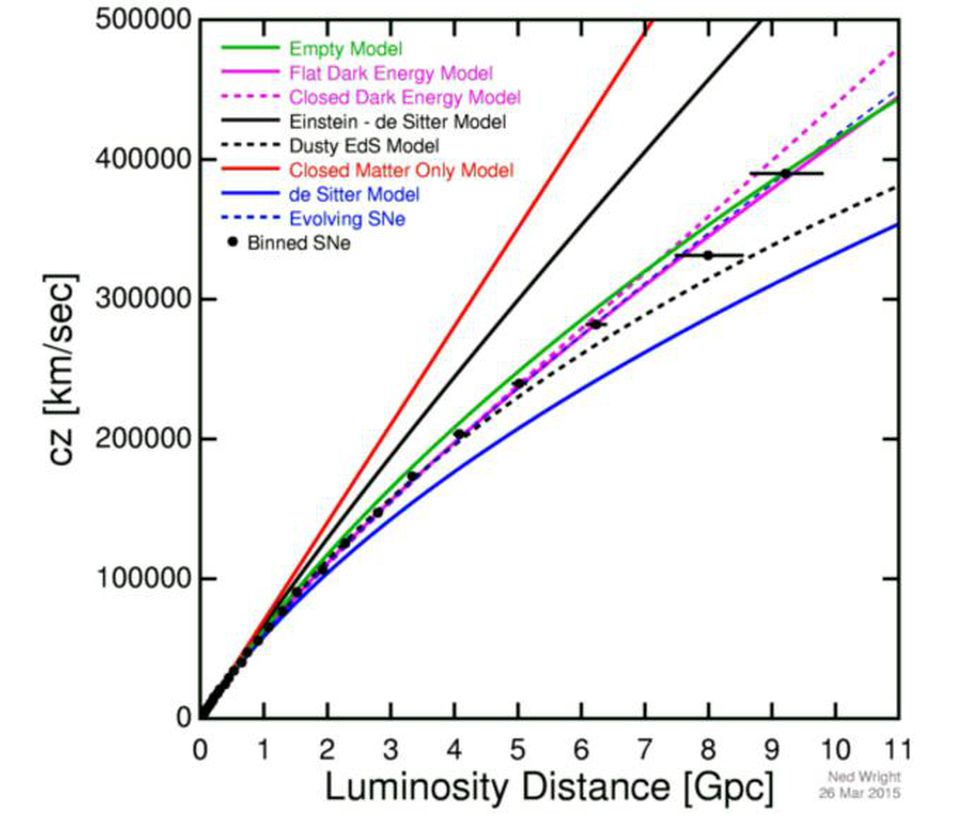
The graph of the apparent expansion rate (y-axis) relative to distance (x-axis) corresponds to the Universe, which in the past has expanded faster, but is expanding today. This is a modern version of graphics, extending thousands of times further than Hubble’s primary work. Different curves correspond to different possible compositions of the universe.
Based on our best measurements, dark energy has the same properties in different regions of the Universe, in all directions in the sky and at all points in cosmic history. In other words, dark energy looks homogeneous and isotropic: it is the same everywhere and always. To our knowledge, dark energy does not necessarily consist of particles; it may simply be a property of the fabric of space itself.
However, dark matter is fundamentally different from it.
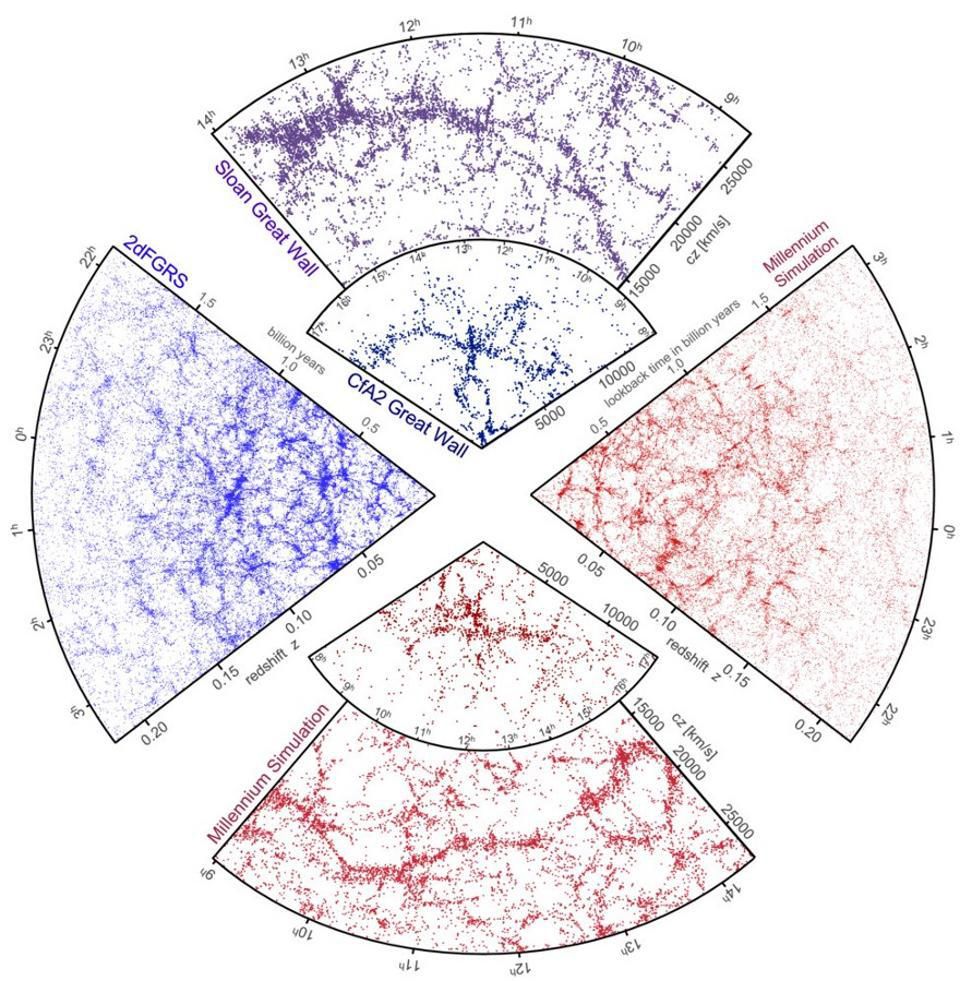
On the largest scale, the observed cluster of galaxies (blue and purple) cannot be reproduced in simulations (red) without the use of dark matter.
To form the structures of the Universe that we observe, especially on the largest, cosmic scales, dark matter must not only exist, but also be able to clump. It can not have the same density in all places of space; it should be concentrated in regions of high density and be sparse or simply absent in regions of low density. We can tell with accuracy how much TM is contained in different regions of space, having made various observations. And here are the three most important observations.

The data on large-scale clusters (points) and predictions based on the Universe, containing 85% of dark matter and 15% of normal matter (solid line) coincide incredibly accurately. The curvature of the line indicates the temperature of the TM; the degree of deviation characterizes the ratio of dark and ordinary matter.
1) The spectral density of matter : it is necessary to establish the location of matter in the Universe, to see on what scales the galaxy correlation is visible - a measure of the probability of the presence of galaxies at a certain distance from the selected one - and mark all of this. If the Universe consisted of homogeneous matter, the resulting structure would be oiled. If TM were not lumpy in the Universe at the very beginning of development, the structure on a small scale would have been destroyed. The spectral density of matter tells us that approximately 85% of the matter in the Universe belongs to TM, completely different from protons, neutrons and electrons, and this TM appeared cold, or with low kinetic energy compared to its rest mass.
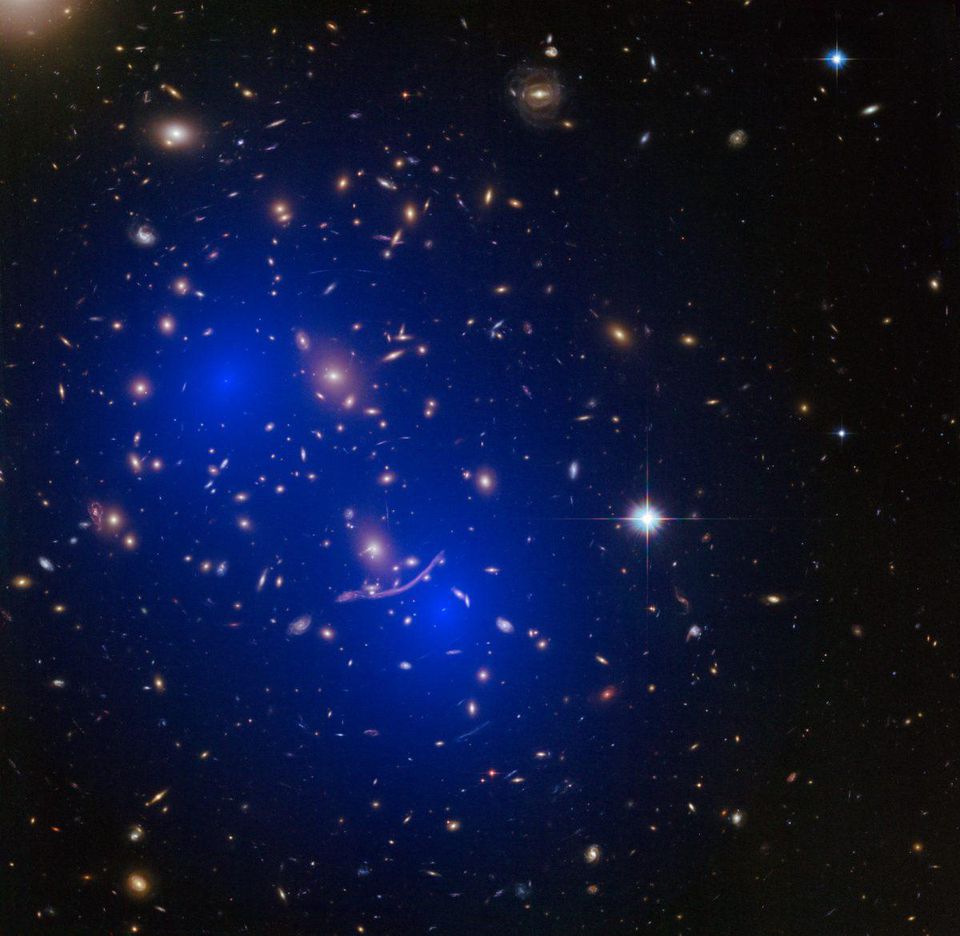
The mass distribution in the cluster of galaxies Abell 370 recreated through gravitational lensing demonstrates two large and scattered halos of mass corresponding to two merging clusters of TMs. Around and throughout the volume of each galaxy, each cluster and massive clusters of matter there is an average of 5 times more TM.
2) Gravitational lensing . If you look at a massive object, such as a quasar, galaxy or cluster of galaxies, you will see how its presence distorts the light of the objects behind it. Since we know the laws of gravity, governed by Einstein GR, on the basis of the curvature of light, we can calculate the amount of mass present in each object. Thanks to a whole set of different methods, we can determine the amount of mass present in normal matter: stars, gas, dust, black holes, plasma, etc. Again, we find that, on average, 85% of matter should relate to TM, and moreover, that TM is distributed in a more diffuse, cloud-like way, unlike dense normal matter. This is confirmed by both weak and strong lensing.
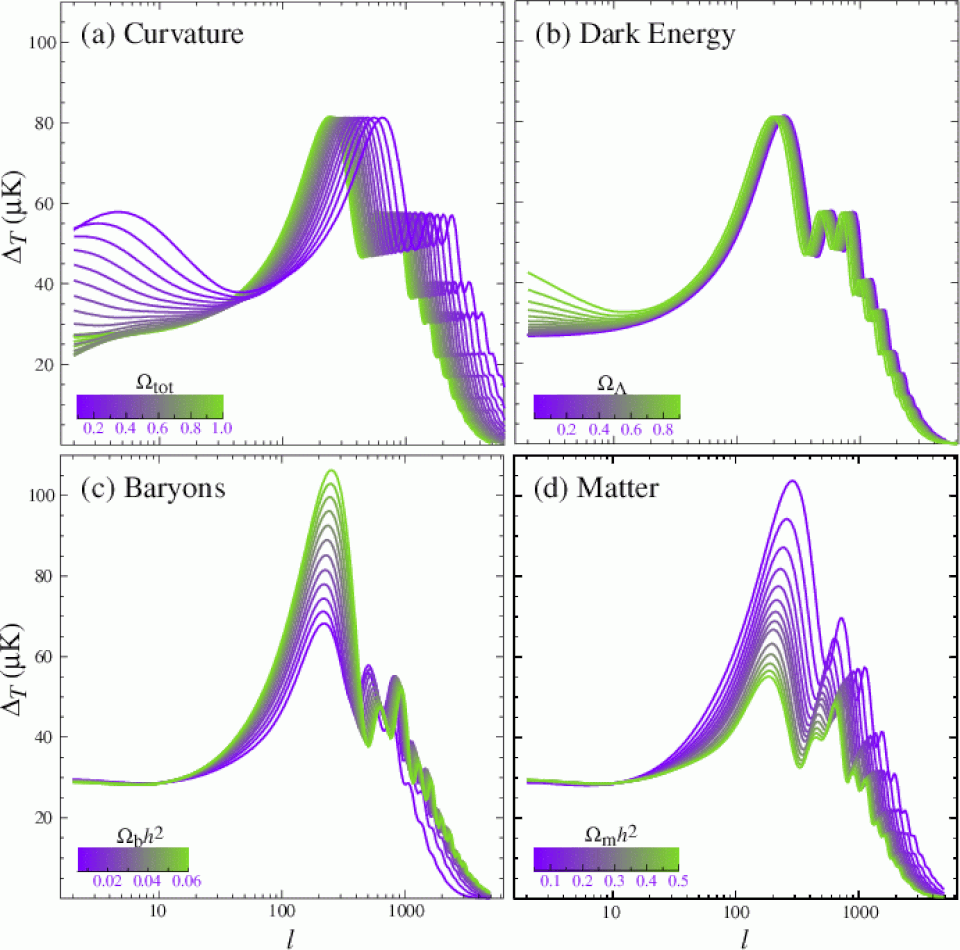
The structure of the bursts of the CMB changes depending on the contents of the Universe.
3) Relic radiation . If we study the residual luminescence of the radiation remaining from the Big Bang, we can find that it is approximately uniform: 2.725 K in all directions. If you delve into the details, it will become clear that there are tiny imperfections in the order of tens and hundreds of microns on all angular scales. These fluctuations tell us a lot of important things, including the ratio of the densities of normal matter, dark matter and dark energy, but most importantly, what they say is how uniform the universe was at the age of 0.003% of the current, and then its densest areas were only 0.01% denser than the least dense. In other words, dark matter began to be completely uniform, and with time it lumped!
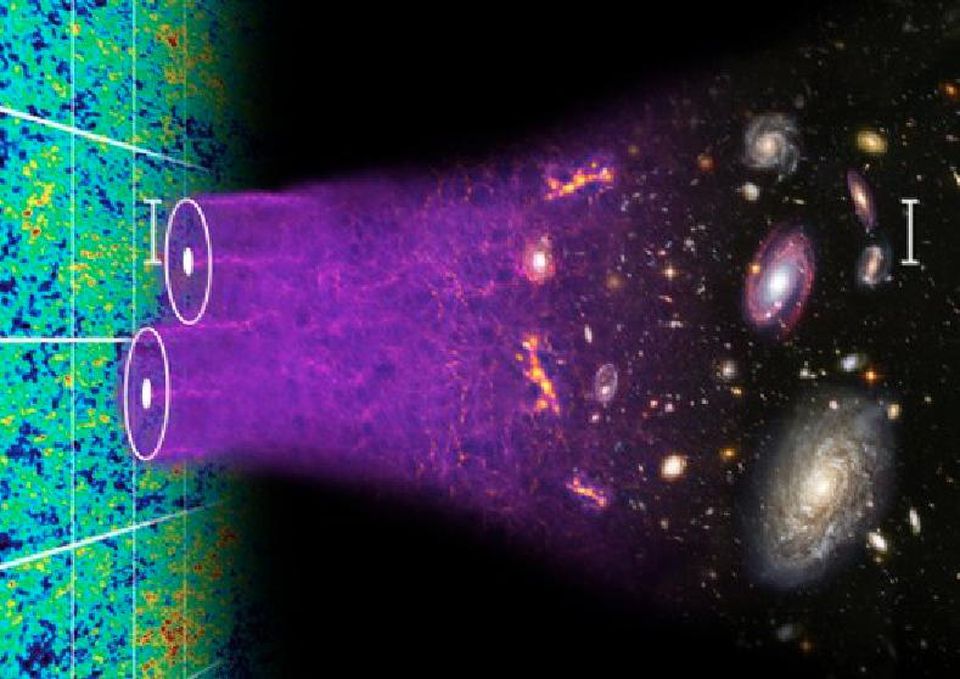
A detailed study of the universe suggests that it consists of matter, but not of antimatter; that dark matter and dark energy must be present in it, and that the sources of these mysterious substances are unknown to us. However, the relic radiation fluctuations, the formation and correlation between large-scale structures and modern observations of gravitational lensing all converge in the same picture.
Putting it all together, we conclude that TM is obliged to behave like a liquid permeating the Universe. This fluid has negligible pressure and viscosity, it reacts to radiation pressure, it does not collide with photons or normal matter, it originated cold and non-relativistic, and it crumples together under the influence of its own gravity. It controls the formation of structures of the universe on a large scale. It is extremely non-homogeneous, and the magnitude of its heterogeneity increases with time.
That is what we can say about it on a large scale - where there are observations. On a small scale, we suspect - but not sure - that dark matter consists of particles with such properties that cause it to behave on a large scale as it happens. We assume this because the Universe, as far as we know, consists simply of particles, and that's it! If it is matter, if it has mass, then it also has a quantum twin - and at some level it must have particles. But until we directly discover this particle, we have no way to reject another possibility — that TM is a kind of field that behaves like a liquid, but that influences space-time just as particle clusters do.
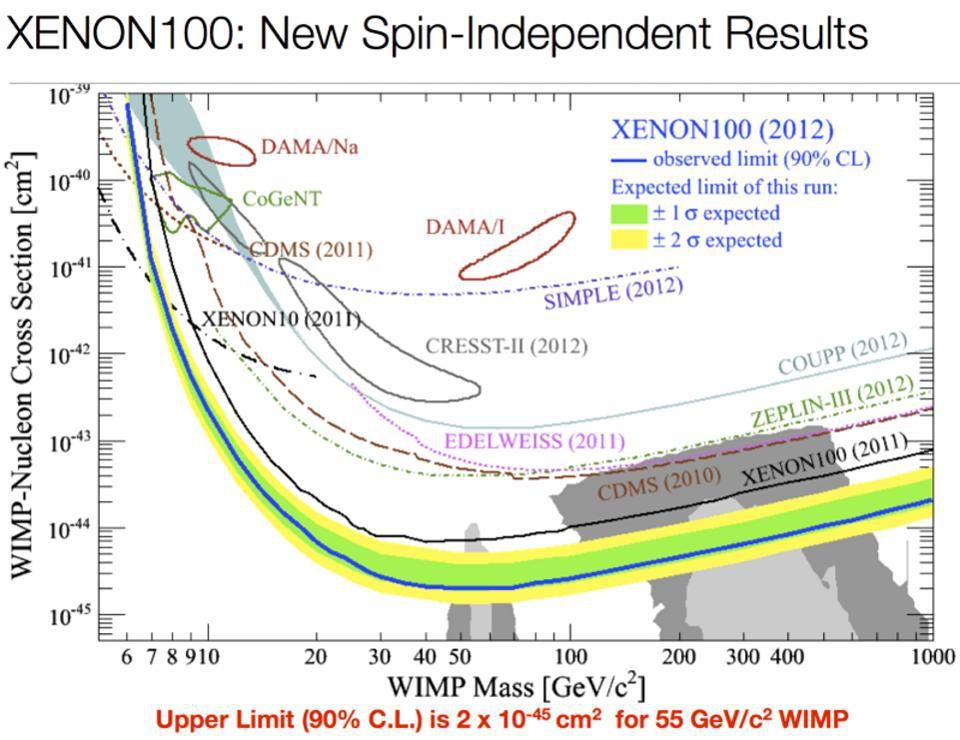
Experimental restrictions on dark matter, consisting of wimps , are extremely strict. The lowest curve excludes cross sections and TM masses for everything that is located on top of it.
Therefore, attempts of direct detection of TM are so important! As a theoretician who wrote his doctoral thesis on the formation of large-scale structures, I perfectly understand that we can accomplish a great deal in predicting large-scale observations. But what we cannot do theoretically is to say whether TM consists of particles or not. The only way to check this is to detect it directly; without this, convincing indirect evidence can be gathered, but they will not be irrefutable. It seems to have nothing to do with dark energy, since the latter is truly uniform in all space, and the predictions tell us quite accurately how it interacts through gravity and other large-scale interactions.
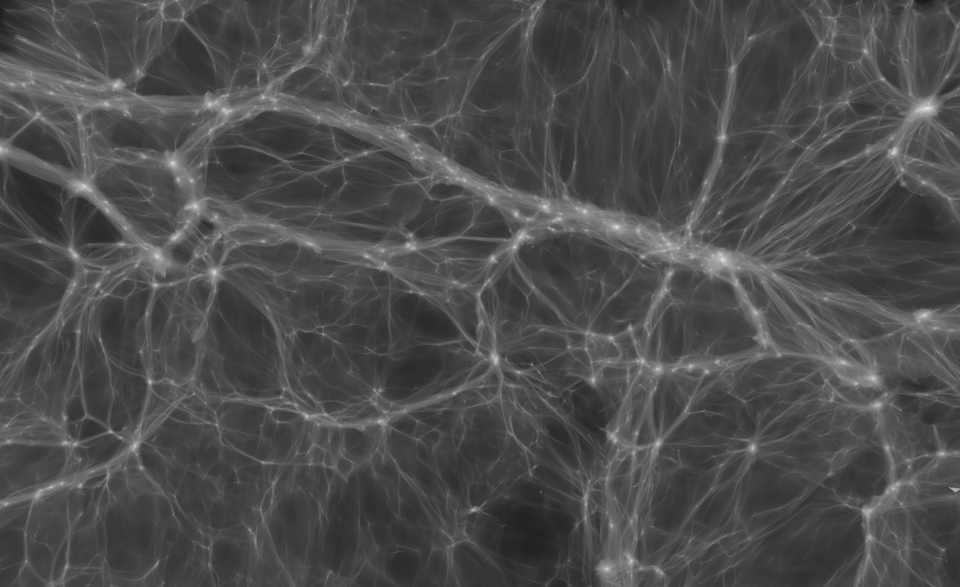
Dark matter flows control the accumulation of galaxies and the formation of large-scale structures - this is evident in this simulation from KIPAC / Stanford
But is it made of particles? Until we find this particle, this can only be assumed. The universe demonstrates its quantum essence, at least for all types of matter, so it is logical to assume that the same will be dark matter. However, it should be remembered that such reasoning has its limitations. After all, in the end, everything and everywhere obeys the same rules, but only until it ceases to obey them! With TM, we are in uncharted territory, and it is very important to maintain modesty in the face of the great mysteries of the universe.
All Articles